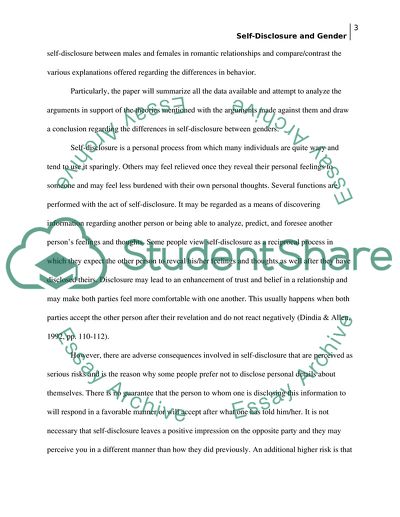Cite this document
(Self-Disclosure and Gender Research Paper Example | Topics and Well Written Essays - 3500 words, n.d.)
Self-Disclosure and Gender Research Paper Example | Topics and Well Written Essays - 3500 words. Retrieved from https://studentshare.org/psychology/1773577-the-relationship-between-self-disclosure-and-gender
Self-Disclosure and Gender Research Paper Example | Topics and Well Written Essays - 3500 words. Retrieved from https://studentshare.org/psychology/1773577-the-relationship-between-self-disclosure-and-gender
(Self-Disclosure and Gender Research Paper Example | Topics and Well Written Essays - 3500 Words)
Self-Disclosure and Gender Research Paper Example | Topics and Well Written Essays - 3500 Words. https://studentshare.org/psychology/1773577-the-relationship-between-self-disclosure-and-gender.
Self-Disclosure and Gender Research Paper Example | Topics and Well Written Essays - 3500 Words. https://studentshare.org/psychology/1773577-the-relationship-between-self-disclosure-and-gender.
“Self-Disclosure and Gender Research Paper Example | Topics and Well Written Essays - 3500 Words”, n.d. https://studentshare.org/psychology/1773577-the-relationship-between-self-disclosure-and-gender.


